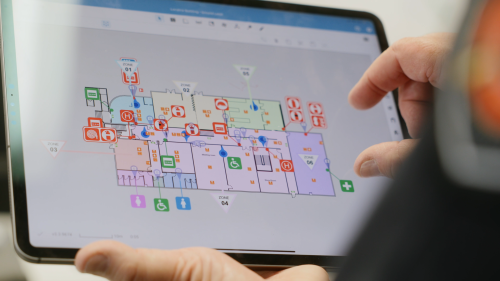Tom Matthews
Over the past five years, the vertical market software (VMS) industry has continued to mature from a little-known underdog to a fast-growing segment in the entrepreneurial ecosystem. Over the same period, the market size for VMS businesses has nearly tripled to support numerous billion-dollar businesses and a new wave of cloud players.
As of 2023, Pemba has the largest VMS portfolio in the Australian private equity market. This article sets out our top ten learnings from almost a decade of VMS investing.
Lesson 1: Market attractiveness
When assessing the relative attractiveness of a VMS industry, there are a number of considerations. At Pemba, we look for large addressable, defensive and well-funded end markets, usually with complex compliance requirements, that have been slow to adopt software historically.
- The size of the market. When assessing market size, we consider: (i) The total addressable market (TAM). The TAM represents the revenue opportunity that a company has if it has a full 100% market share, and there is no competition; (ii) The serviceable addressable market (SAM). The SAM represents the “slice” of the TAM “pie” that can be served by a company’s software; and (iii) The serviceable obtainable market (SOM). The SOM represents the actual amount of the market that is being served by the company’s software
- Market growth rates. We look for end markets that are growing at above GDP growth rates, ideally 10%+ per annum
- Sustainability of growth drivers. Given the narrow focus of vertical software, the success or failure of these companies is often tied closely to the health of the end markets they serve. Accordingly, we look for end markets with sustainable growth drivers; verticals that are not exposed to an economic cycle and are therefore recession resilient
- Compliance-driven. At Pemba, we like end markets that are highly regulated, where compliance is complex and constantly changing. Software solutions which help clients comply with complex regulatory requirements and demonstrate outcomes become mission-critical to the customer’s organisation. Accordingly, complex compliance requirements can create a significant barrier to entry to a VMS industry
- Competitive landscape. We look for end market verticals that have been slow to adopt software historically, and ideally with relatively low levels of competitive intensity.
Lesson 2: Own the “core system of record”
At Pemba, we like to invest in VMS businesses that provide mission-critical software solutions. We find that in most industries, there is usually one system that’s more important than the others. This system is often referred to as the “core system of record”. One way to identify the “core system of record” is if one of the clients in the end market was going out of business and had to turn off one system last, what would it be? We find that if you own the core system of record, then it gives you lots of opportunity to do more for the customer and expand the VMS company’s offering.
Lesson 3: The importance of category leadership
The goal of every VMS company should be to find a pathway to market leadership. By focusing on a vertical market, these companies are able to trade market size for market share and in some cases achieve 50%+ market penetration. In vertical markets, one or two software vendors often dominate and capture most of the value.
We look for VMS businesses that are either the leader in their category, or have the potential for category leadership. Typically, these VMS businesses will have market-leading functionality, offer a compelling value proposition for their customers, and utilise modern technology solutions (see Lesson 6 below).
Lesson 4: Revenue visibility
At Pemba, we look to invest in businesses with high levels of revenue visibility. VMS businesses typically have recurring software subscription revenue models. We look for VMS companies with a high proportion of recurring revenues, a long established and “sticky” client base, and extremely high revenue retention rates.
Lesson 5: Customer diversification
We like to invest in VMS companies with a diversified customer base. We don’t like companies where there is one or a handful of customers that make up a large proportion of the total revenue. The reason for this is if one or more of these customers were to churn, then it would result in a significant hit to the VMS business’ revenue and profit.
Lesson 6: Modern tech stack
Many VMS markets are still in their infancy with regards to cloud adoption. Accordingly, many VMS end markets tend to be users of inflexible and clunky legacy technology solutions, which, over time, will need to be replaced by more flexible, modern alternatives. Modern, cloud-based technology delivers greater functionality and flexibility at lower cost, risk and time to delivery than legacy solutions.
At Pemba, we look for VMS companies with modern, cloud-based technology that can take market share from incumbent vendors with legacy solutions.
Lesson 7: Proprietary IP
We target VMS businesses that own all IP to the product they have developed. We don’t typically invest in VMS businesses that licence another company’s software and sell that in Australia and New Zealand. The risk of VMS companies that licence IP from another vendor is that the licence agreement could be terminated or not renewed at the end of its term.
Lesson 8: The “Rule of 40” (annual revenue growth + profit margin)
The “Rule of 40” is a metric commonly used by technology investors to measure performance. Measuring the trade-off between profitability and growth, the “Rule of 40” asserts software companies should be targeting their growth rate and profit margin to add up to 40% or more.
At Pemba, we look for VMS companies that track either close to (or ideally above) the “Rule of 40”.
Lesson 9: Cash generation
One of the great features about VMS businesses is that many of their customers pay in advance. In addition, they typically have minimal capex requirements. Accordingly, many VMS businesses are highly cash generative, with free cash flow conversion often over 100%.
Lesson 10: Management, management, management
At Pemba, we believe that whilst capital is an important part of successful businesses, the most crucial element is the talent and leadership driving them.
VMS businesses, like all businesses, are reliant on the people that work within them. However, many VMS investors focus their due diligence on the technology and don’t spend enough time on the people in the business who will be delivering the growth plan.
At Pemba, we spend a lot of time getting to know the key people at the heart of the businesses we back. We look to incentivise key members of the senior management teams of our VMS partner companies to ensure interests are aligned with the company’s future success.
Final word
If you’d like to learn more about VMS investing or have questions about this article, please email tomm@pemba.com.au to discuss further.



